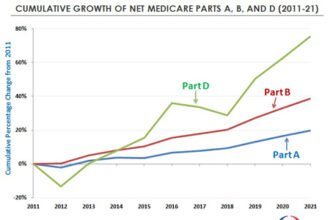The federal
The federal Health Insurance Exchange regulations were released in final form last week. (See Timothy Jost’s précis on the Health Affairs blog and HHS presser.)
I had the opportunity to hear Pennsylvania Insurance Commissioner Michael Consedine speak in Philadelphia about his state’s progress towards building an exchange the very next day (I was speaking later on the program). Pennsylvania is one of the 26 states challenging the federal health reform law (and even has a state constitutional amendment afoot that would bar implementation of the individual mandate in PA), but that hasn’t stopped the Keystone State from spending a $1 million planning grant and getting a $33.8 million implementation grant to kick their state health insurance exchange into high gear. (Nothing like playing both sides, eh?)
Now that the regs are final, Pennsylvania and the rest of the states had better get cracking, because they are all supposed to have functioning exchanges by January 1, 2014. The next step would for the federales to give the high sign that they are on track by January 1, 2013 by confirming that they meet the requirements of the “Exchange Blueprint” (which seems less prescriptive than “Plan”); if they don’t, or Uncle Sam says their plans aren’t up to snuff, then the feds are to step in and run the state exchange. Interestingly, state-level exchanges may be run by the feds (i.e., HHS) “directly or through agreement with a not-for-profit entity.” 45 CFR 155.105(f). While some detail is offered about state-chartered not-for-profits that may run exchanges on behalf of states, regions within states, or groups of states (though given current insurance marketing rules and practices that are state-specific, multistate exchanges seem yet to be a pipe dream), no detail is offered about this potentially very important not-for-profit — after all, there could theoretically be a single not-for-profit entity operating most state-level exchanges come January 2014. Furthermore, a state-run exchange may contract out its operations in whole or in part to a private entity “that has demonstrated experience on a State or regional basis in the individual and small group health insurance markets and in benefits coverage” and is not a health insurance issuer. 45 CFR 155.110. It will be interesting to see which of the usual suspects move into this new market opportunity.
Given the late date of the final regs relative to the January 1, 2014 compliance date (which is statutory), I’m thinking that Uncle Sam will be running a whole bunch of state health insurance exchanges, at least for a while. On the one hand, January 2014 isn’t exactly around the corner; on the other hand, we’re talking about state bureaucracies that will either have to make or buy exchanges, and both state procurement and state hiring systems may well be described as byzantine. Not to mention the fact that many states haven’t even passed the legislation necessary to establish this new state function. Or that many are hanging back pending the Supreme Court review of the health reform law.
Massachusetts won’t be one of those making or buying this time around, of course, since it already has an exchange (we call it the Connector) up and running under the Massachusetts health reform law. The grandfathering language in the draft regs has survived (45 CFR 155.150), so folks here in Boston won’t have to tweak the Connector to comply with federal requirements, at least initially. A state with an exchange up and running since January 1, 2010, and having at least the percentage of its population covered as CBO estimated in March 2011 will be covered nationally under the ACA in 2016 (95%) may continue to run its own exchange, but will need to work with HHS to determine whether there are any areas onf noncompliance with the federal exchange regs, and work to rectify them.
As I wrote when the draft health insurance exchange regulations were released in July:
Stepping back from the details, the naysayers will say that the state subsidies built into the exchange for eligible residents will break the camel’s back — universal coverage is a pipe dream we can’t afford. The counter-argument, of course, is that we can’t afford widespread uninsurance.
A question that remains is whether we can afford widespread underinsurance. While this set of regs is certainly long, it is not comprehensive. About half of the reg is dedicated to matters of eligibility and enrollment. A couple of key issues have been deferred, including the definition of the “essential health benefits” that must be offered by a “qualified health plan” or QHP — i.e., any health plan that hopes to be listed on a state exchange. The idea is to have that set of benefits determined by reference to the local (i.e., state-level) “typical plan,” which may mean the plan with the most subscribers. Carried to a logical extreme, this approach to defining QHP, while certainly respectful of market differences state to state, could end up undercutting the goals of the ACA by establishing what may be a very low threshold for coverage. This sort of state discretion runs through other aspects of the rule as well; it is not all command-and-control.
As insurers prepare themselves for working with exchanges, they must also prepare themselves for the realities of guaranteed-issue policies based on community rating and no pre-existing condition exclusions. The final regs addressing these issues for the transition period of 2014-2106 and beyond were also issued last week — the three “R”s: Reinsurance, Risk Corridors and Risk Adjustment; read more about them here. One note on the final reg: calculation of plans’ risk scores will be handled by the plans and not by the federales (thanks to comments by Congressional Republicans concerned about government holding the private health data needed for these calculations), which may introduce opportunities for disputes, and certainly reduces opportunities for some big-picture, big data trend analysis in the future.
As January 2013 approaches, some states will be working hard to demonstrate their readiness to comply with the Exchange Blueprint, while others hold back, with one eye on the Supreme Court and one eye on the Congress to be elected this fall. While the regulations allow for a varied patchwork of state exchanges, it seems likely that we will see greater uniformity across the country, with many, if not most, exchanges run — at least initially — by the federales or a federal contractor.






